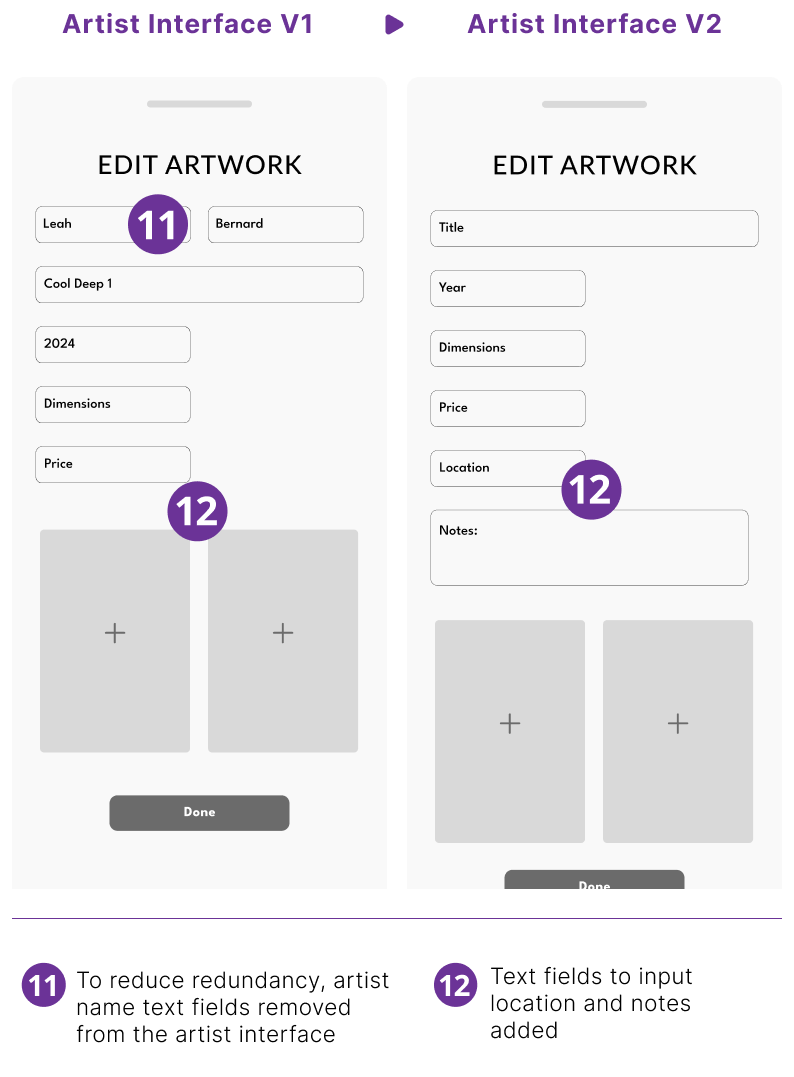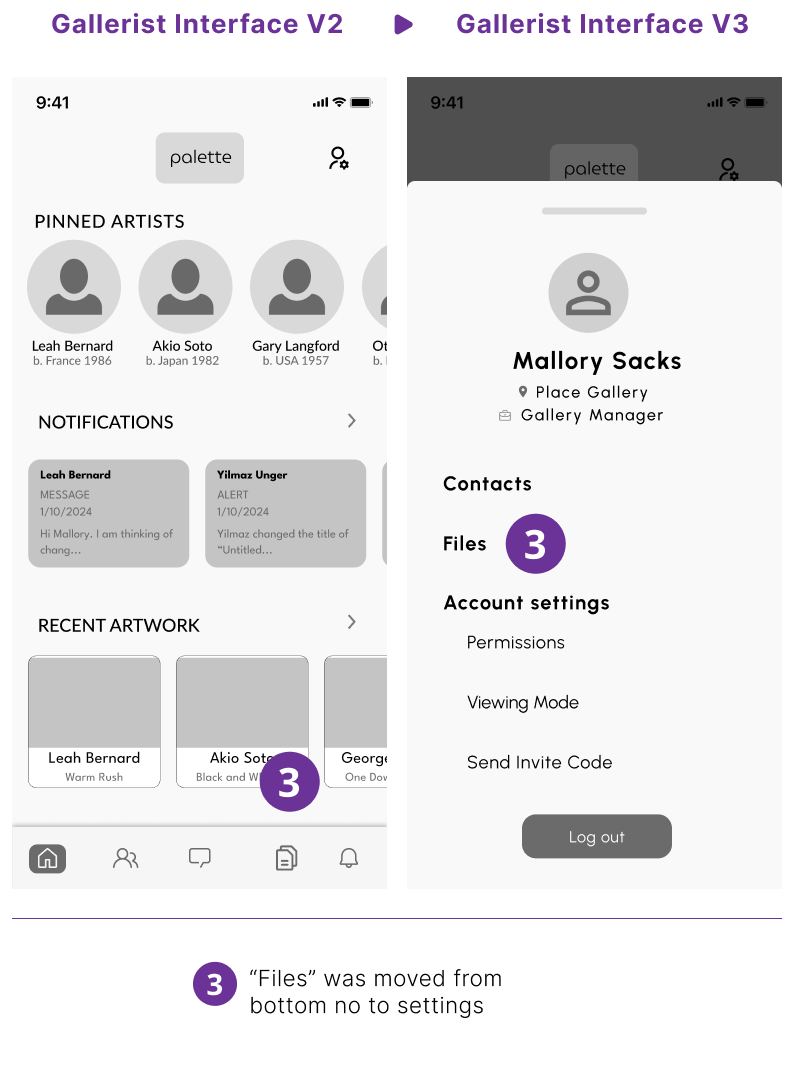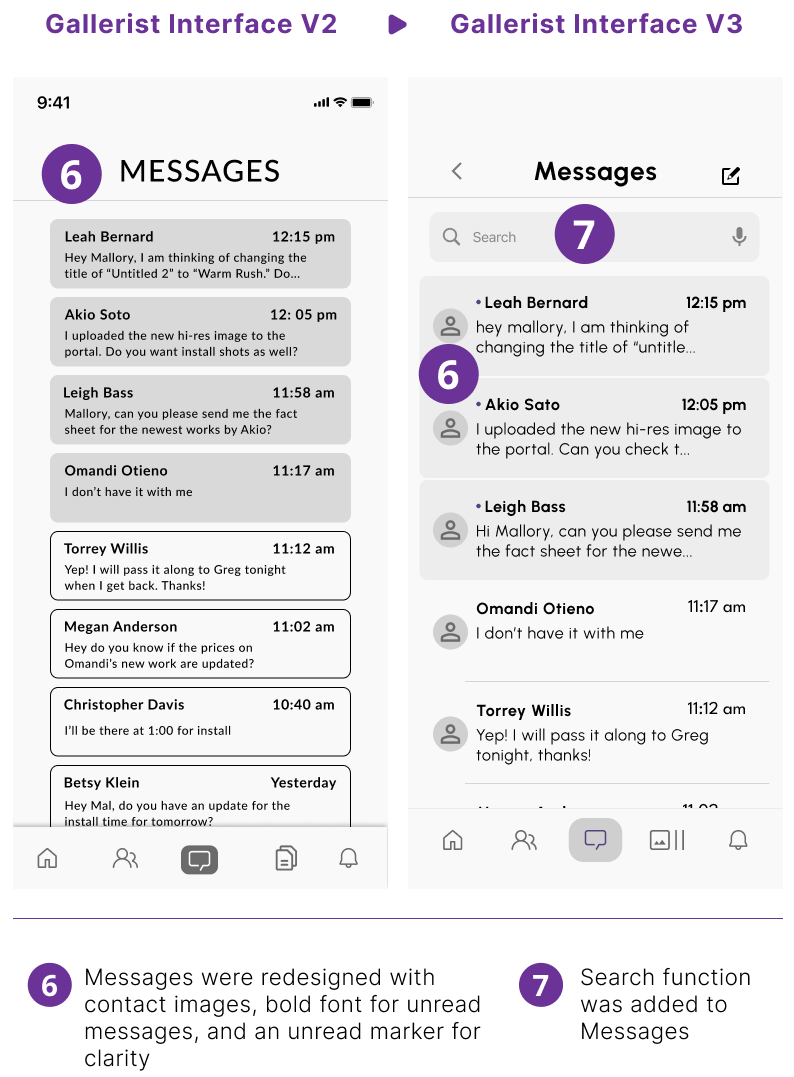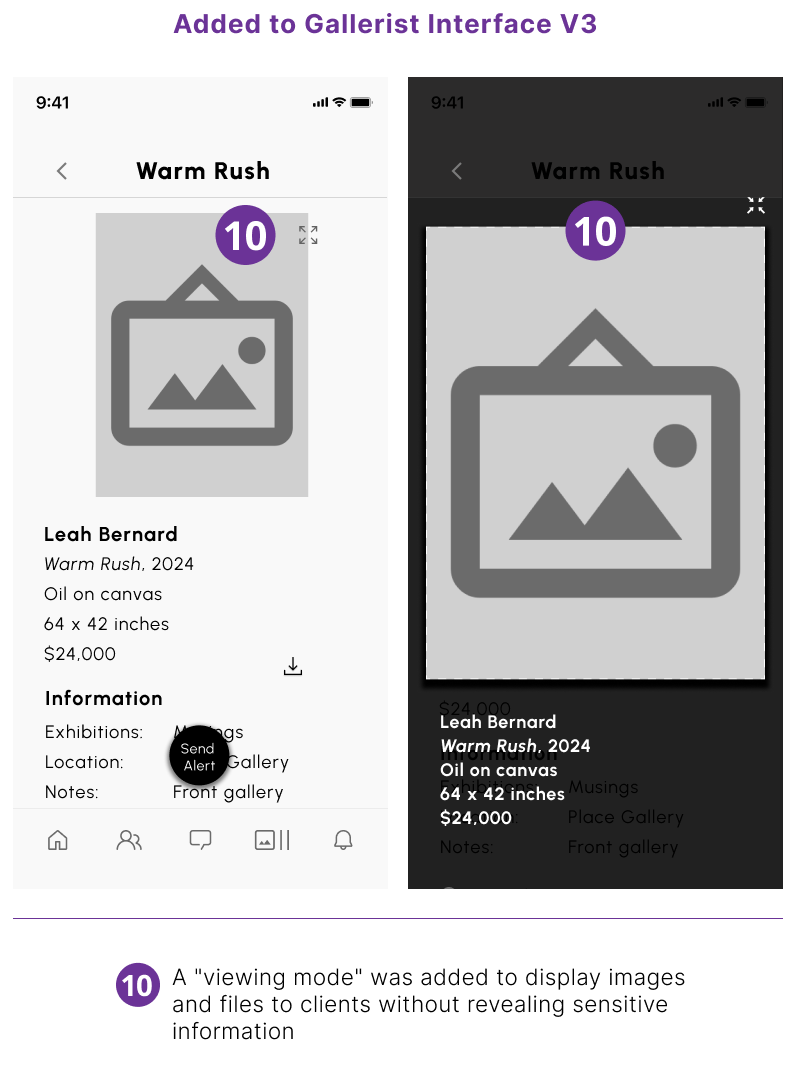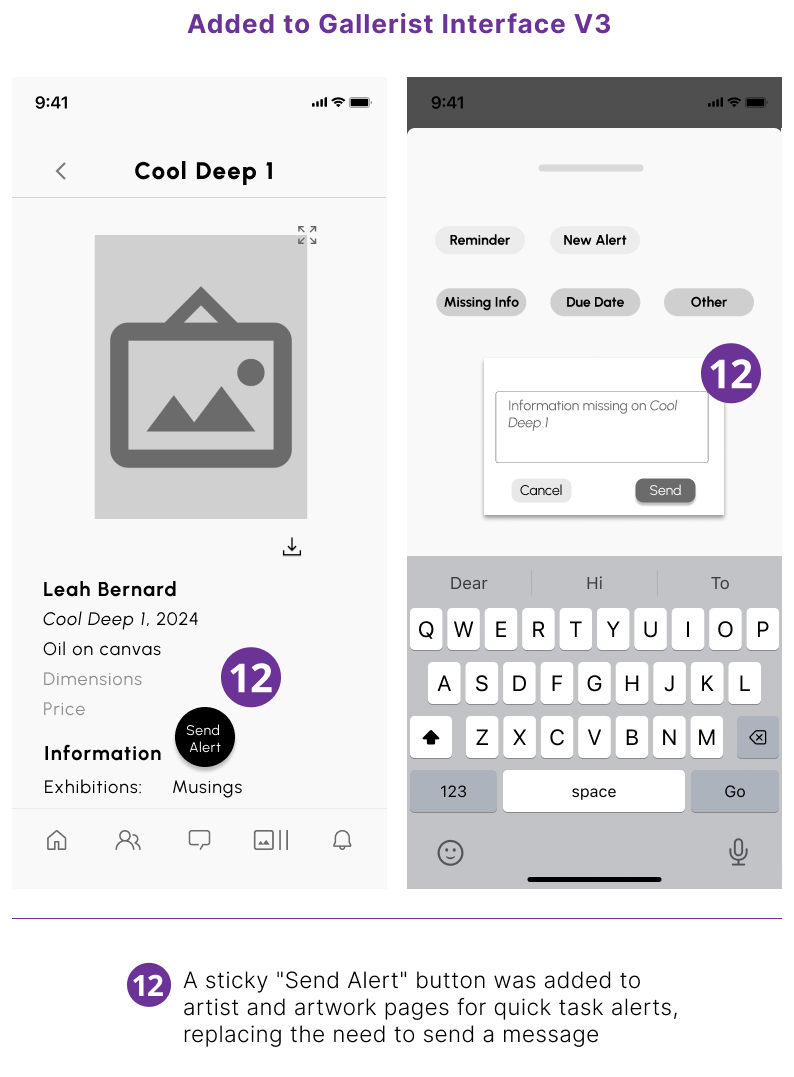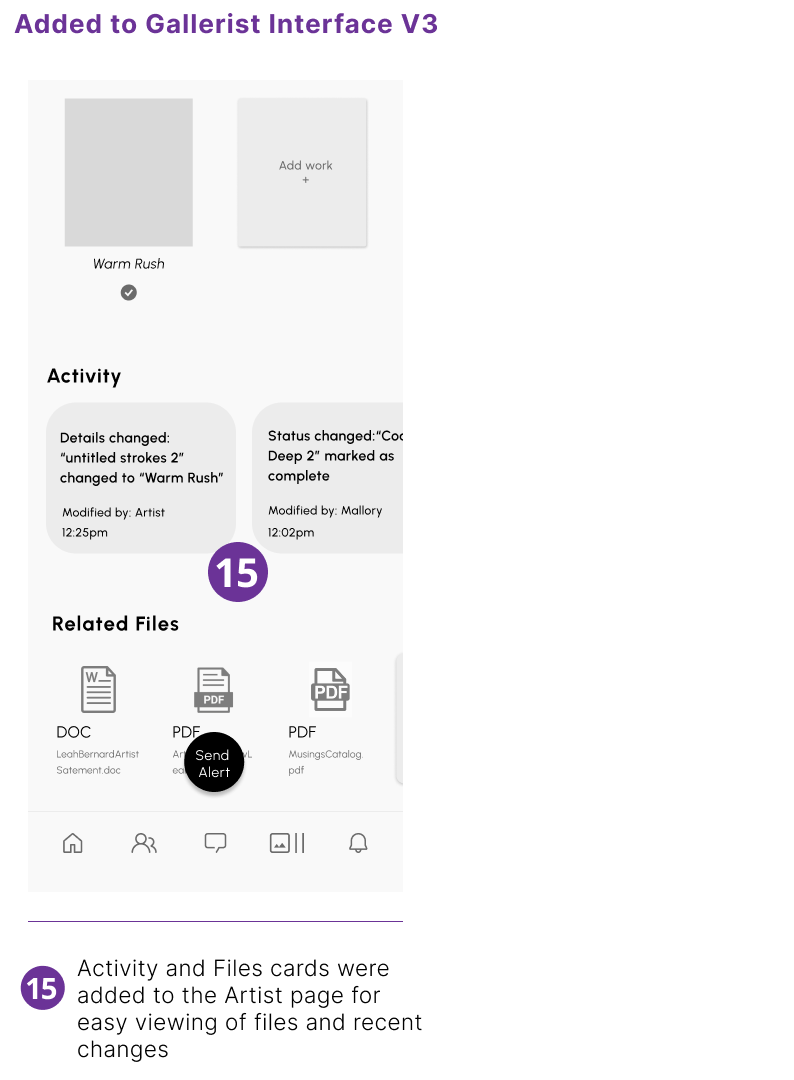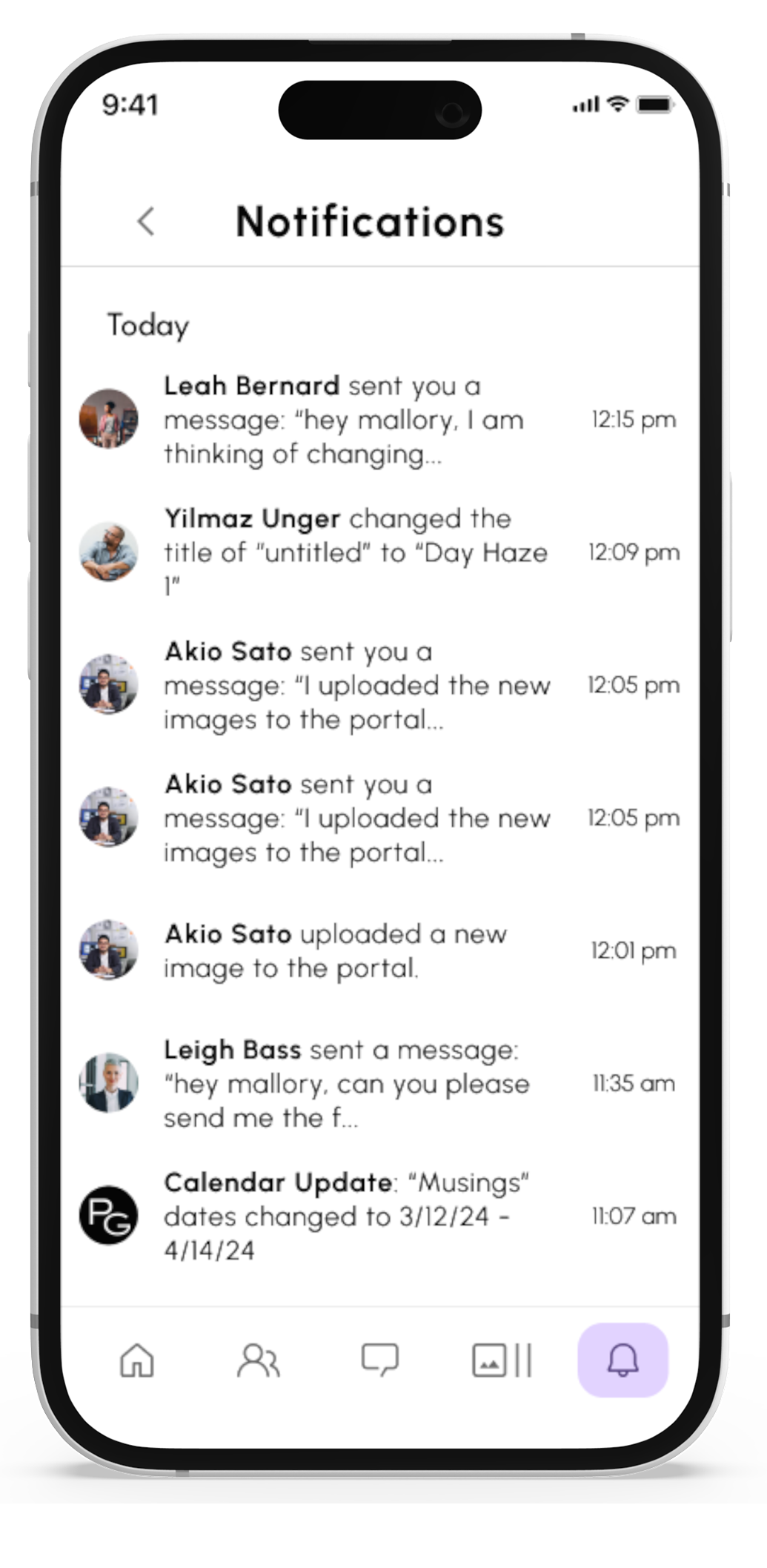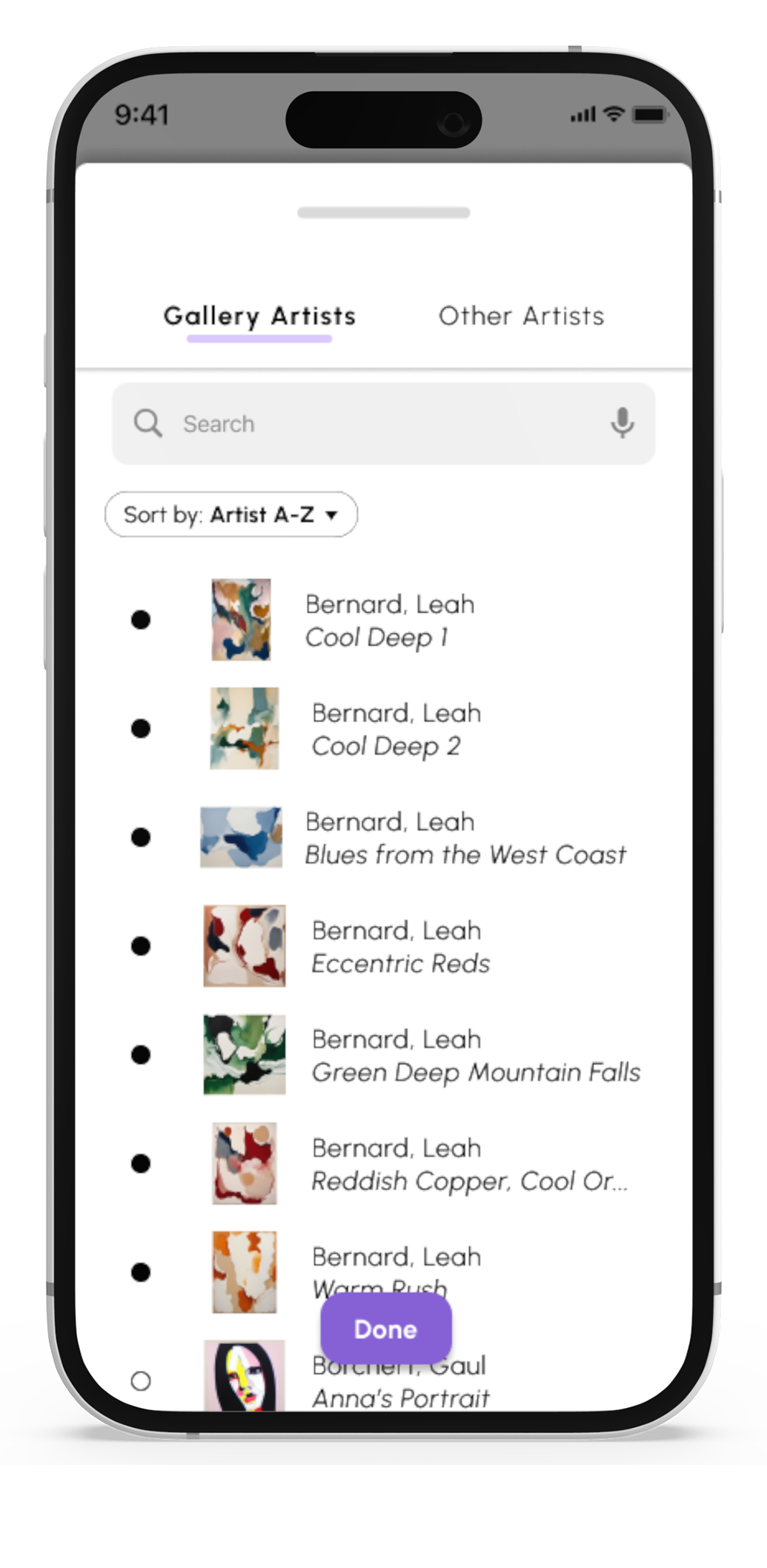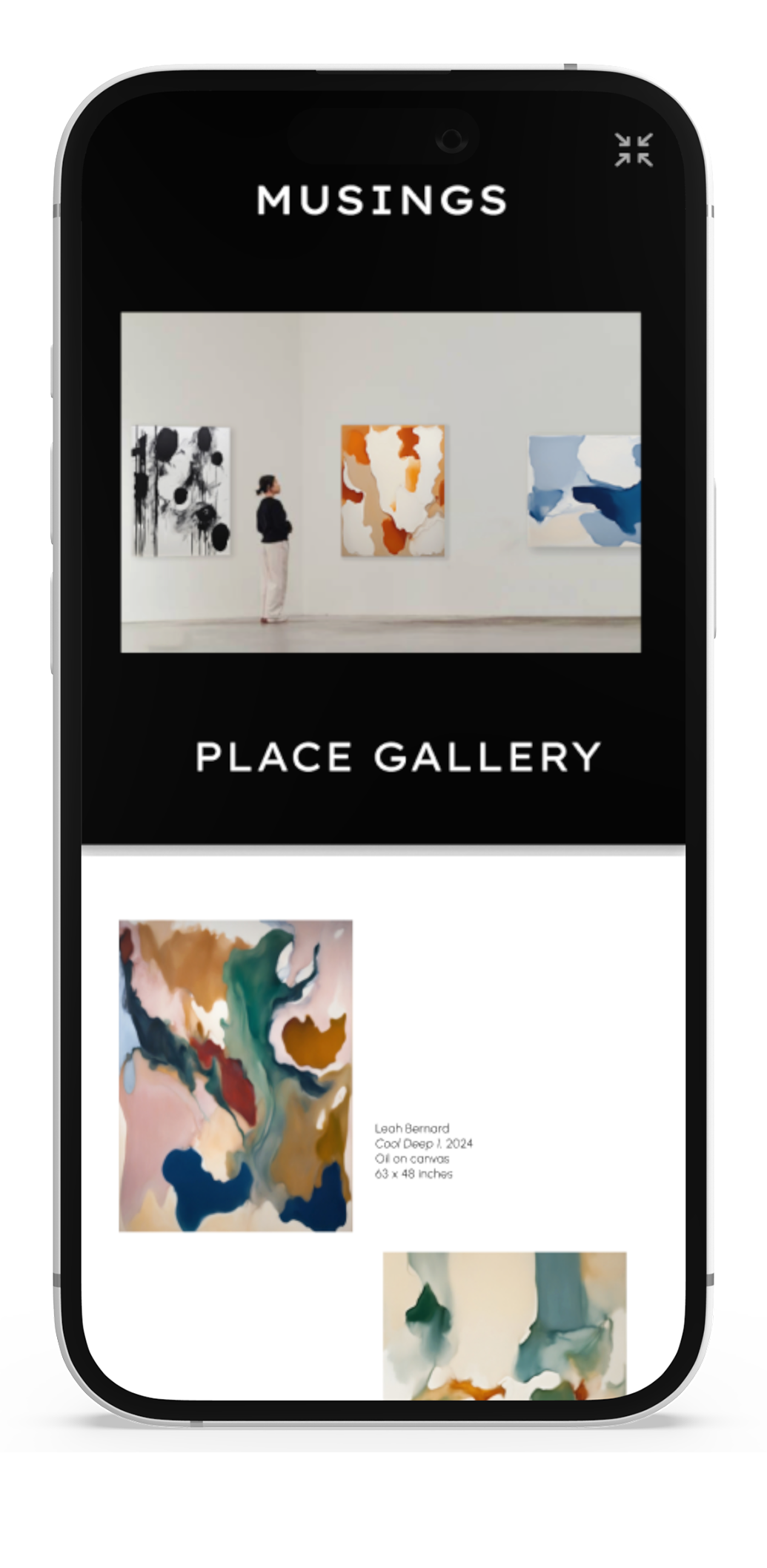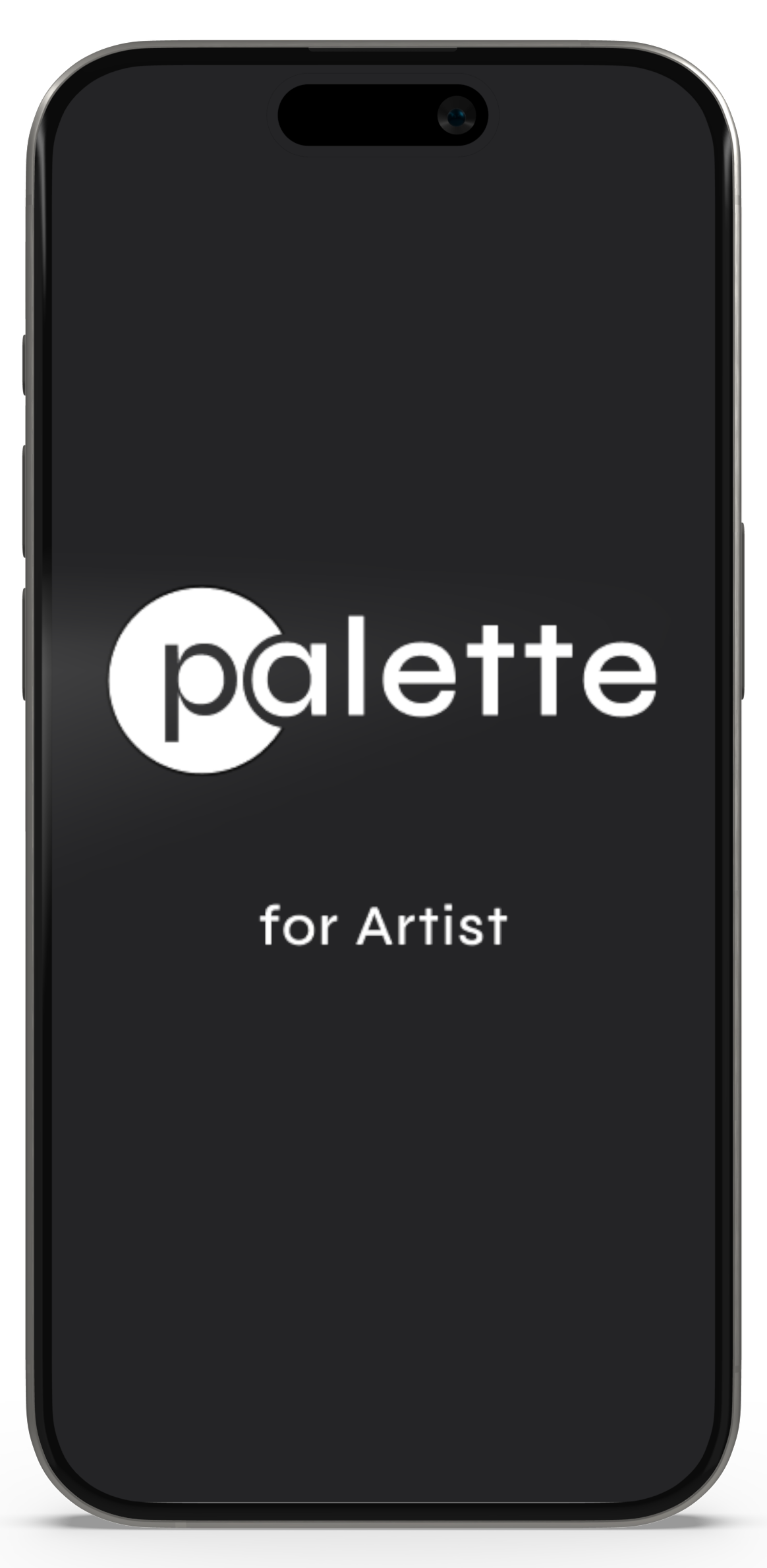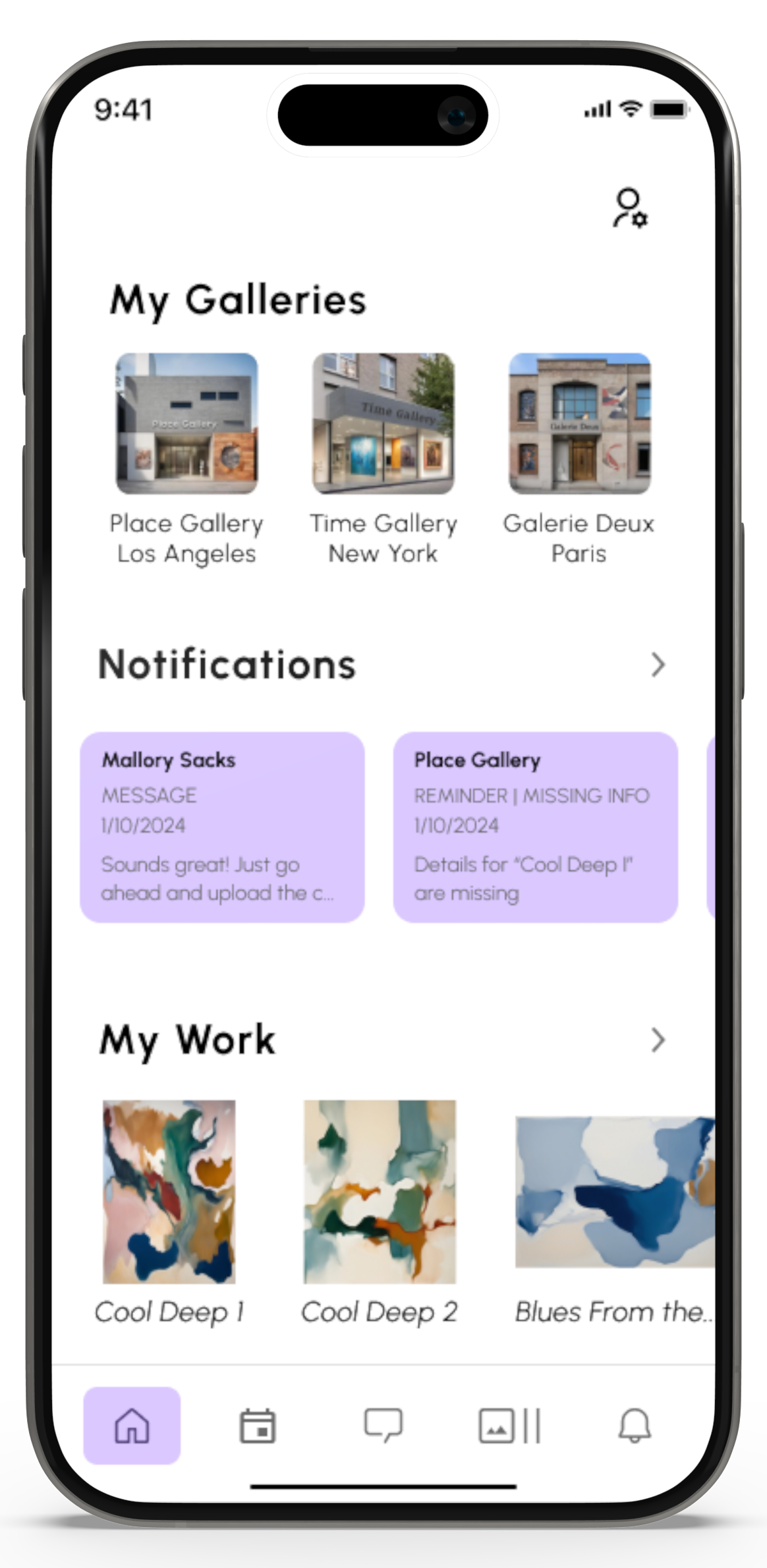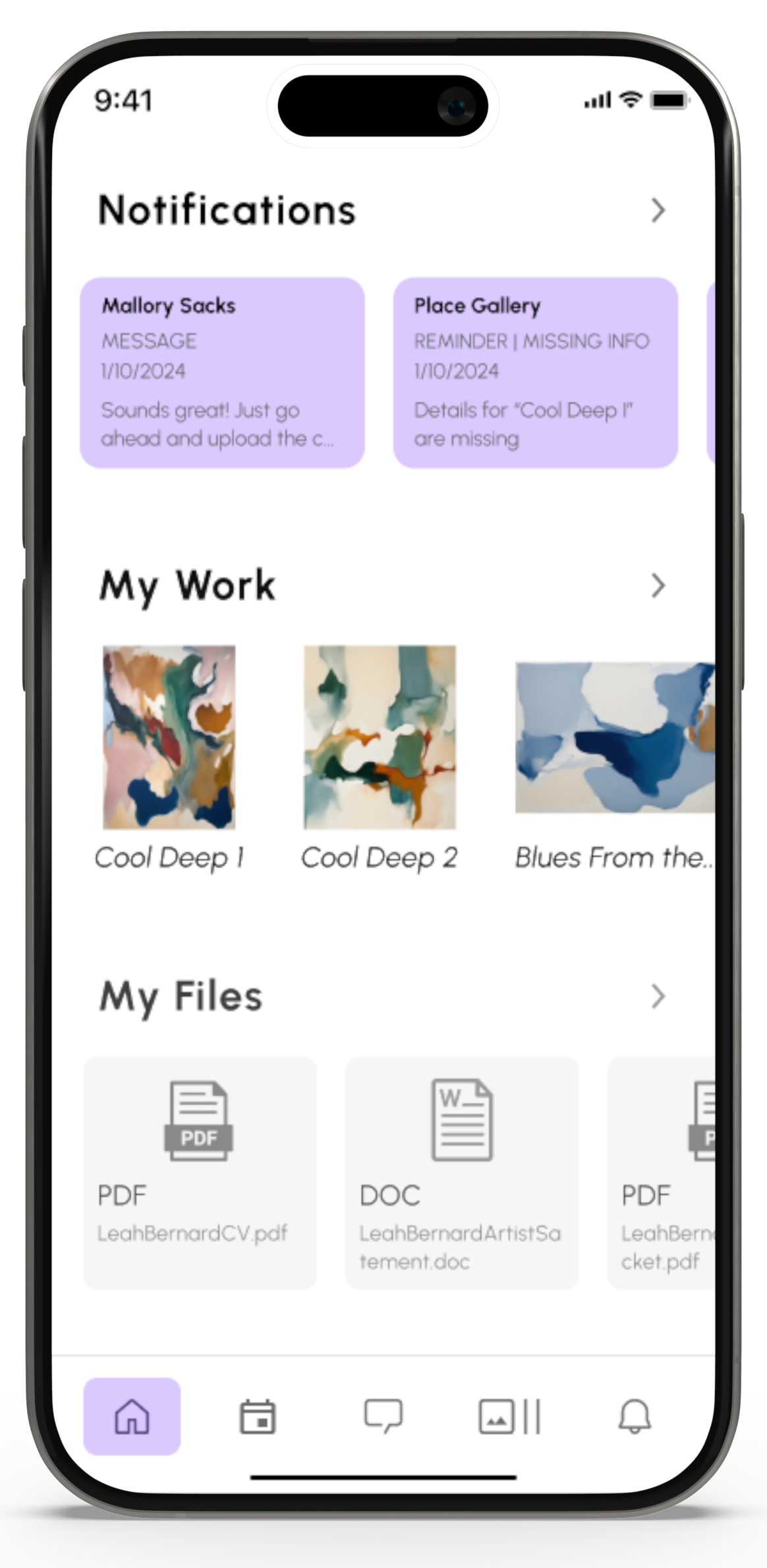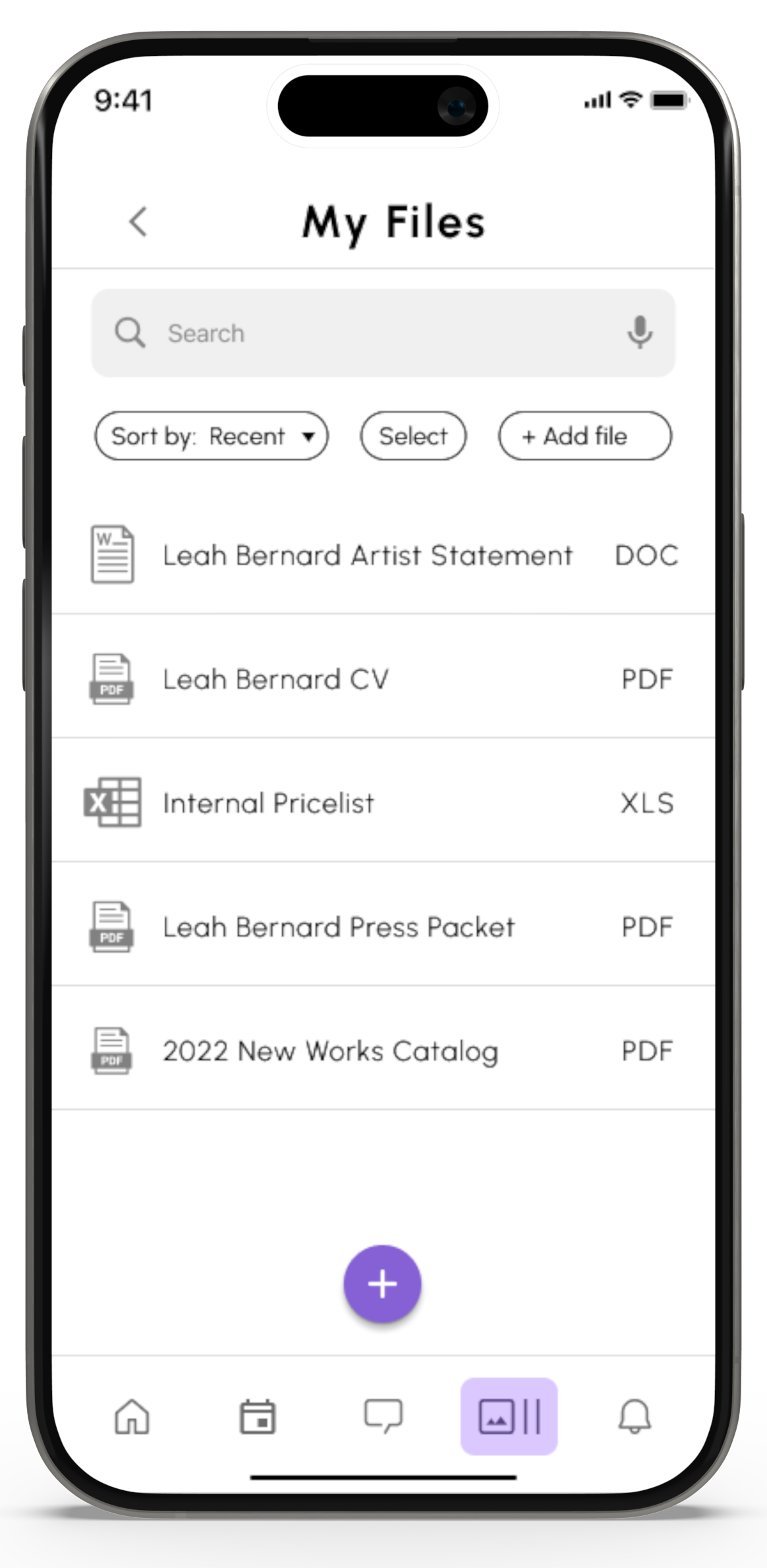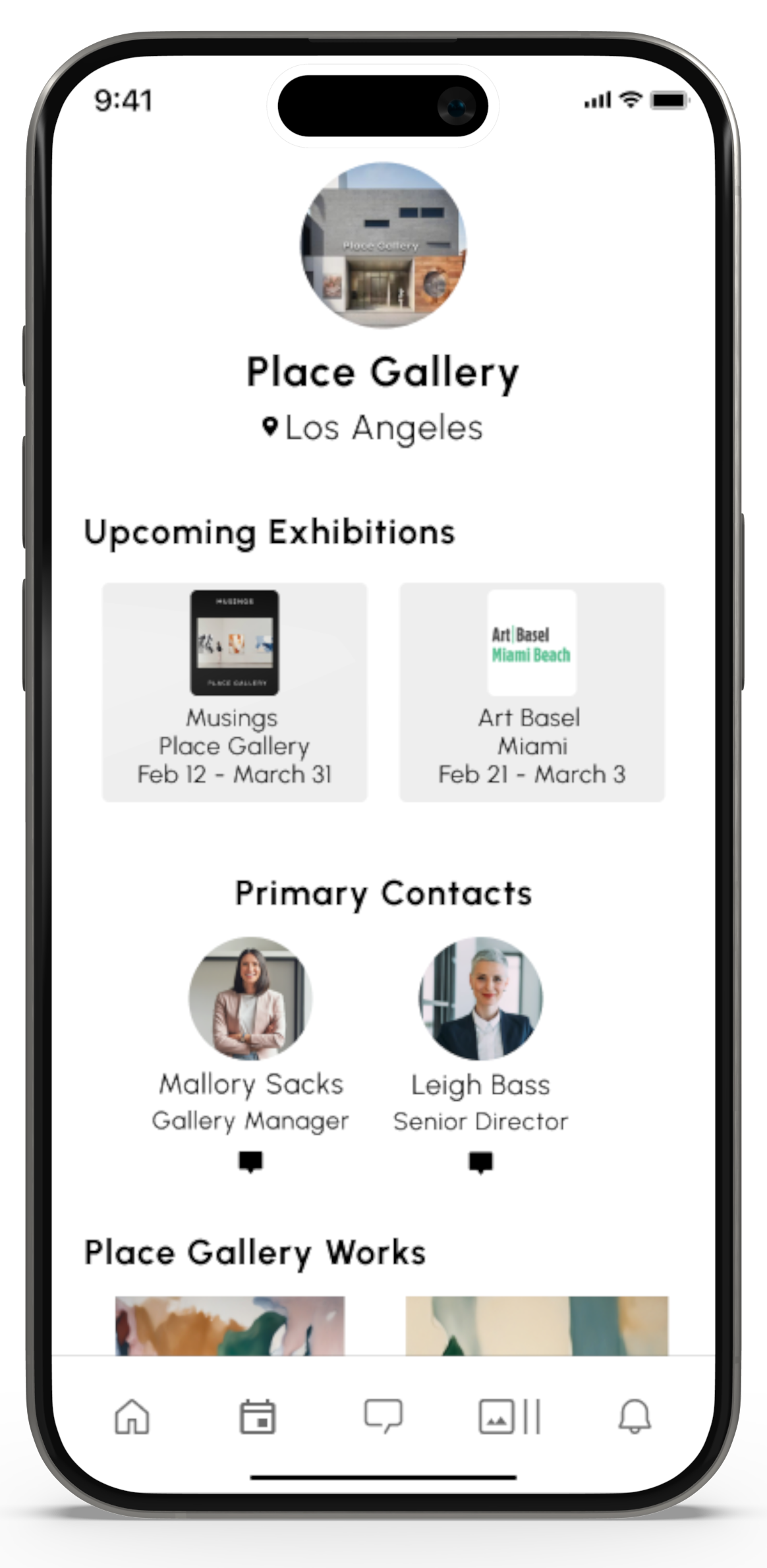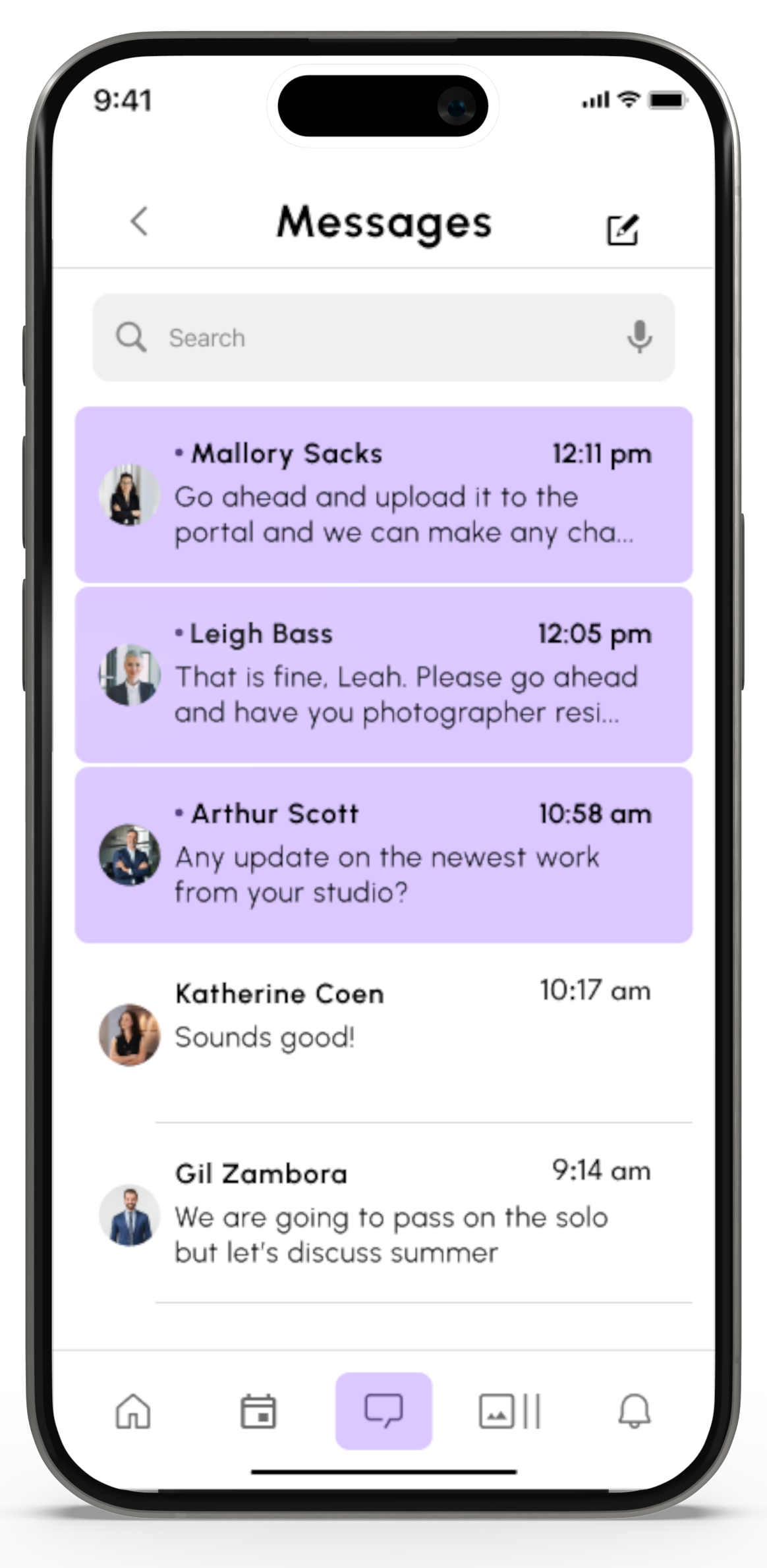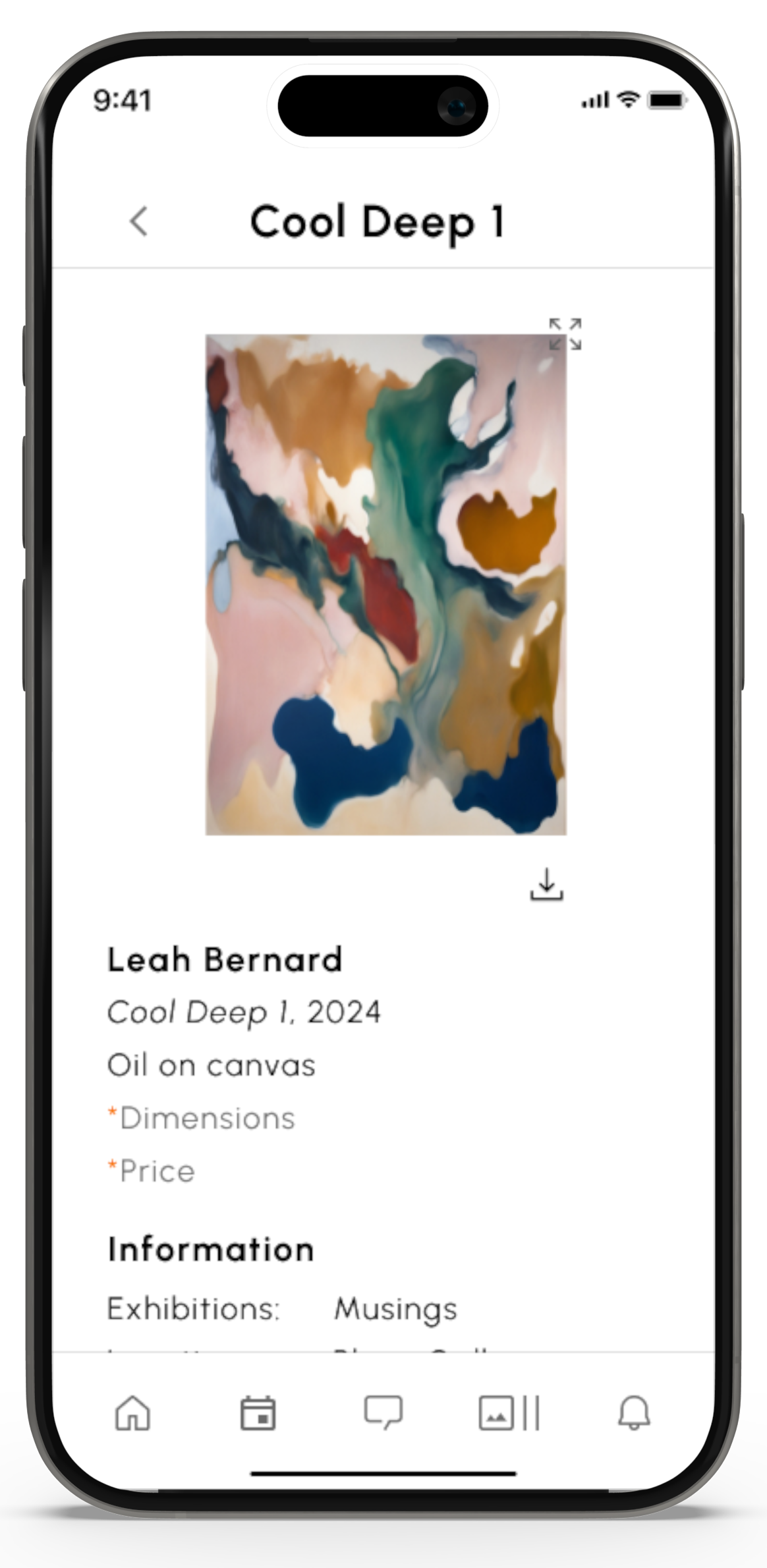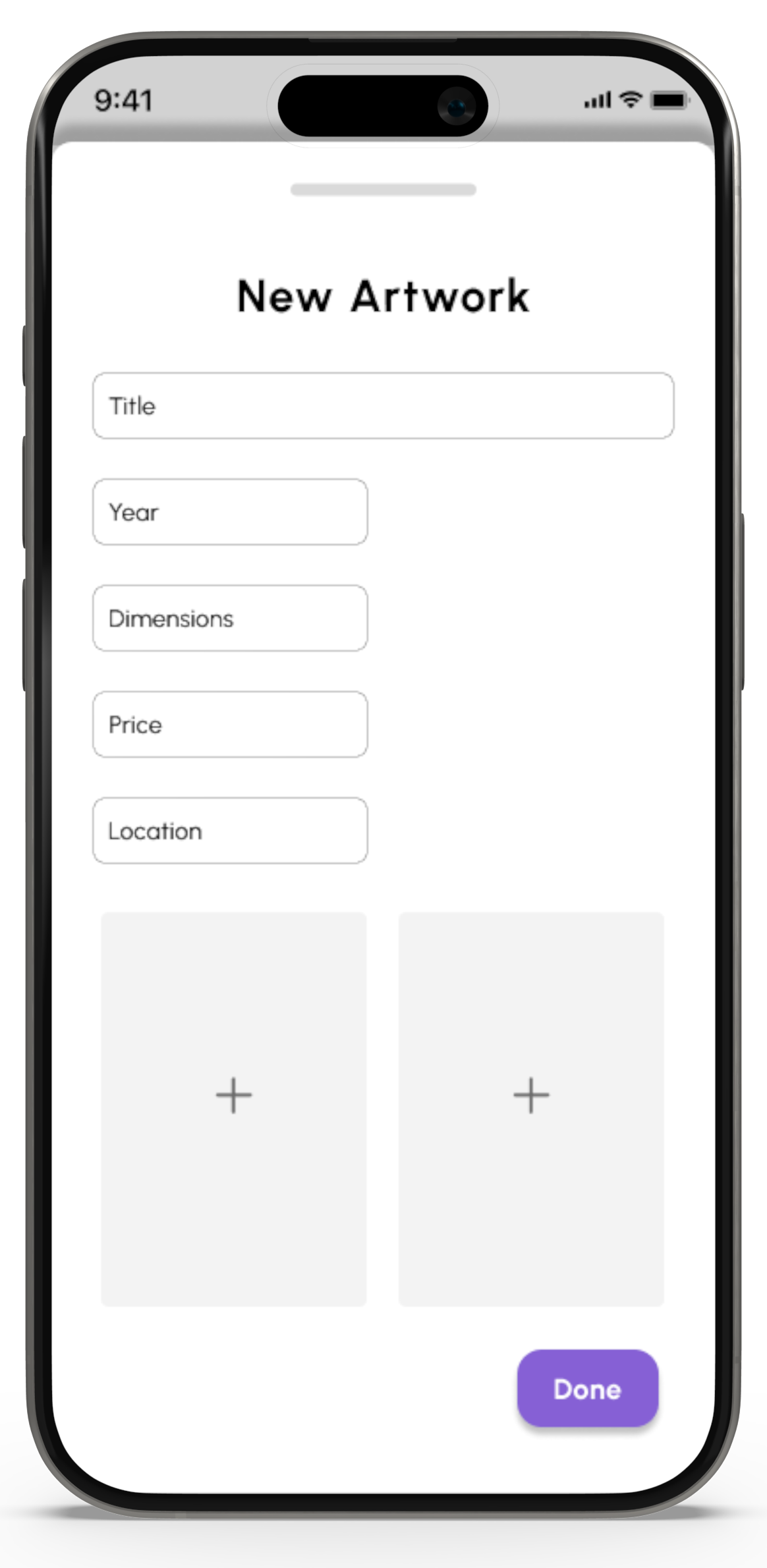Palette
Palette is a collaborative platform for galleries and artists that streamlines operations through unified communication (direct messaging and task reminders), centralized data storage (images and files), and integrated calendaring (internal and shared).
Overview
Role: Product Designer, UX Researcher
Sector: Arts and Commerce
Tools: Figma, Adobe, Dall-E
Focus: Market Research, User Interviews, User Testing, Prototyping
Problem Space
I spent over a decade working in the art world as a gallerist, curator, and independent dealer. I know firsthand how opaque the industry is, with many people and moving parts essential for its operation.
Despite this complexity, there is no internal platform for communication, content sharing, and planning between gallery staff and artists (how frustrating)!
Without a holistic platform to facilitate these processes, we see communication breakdowns and redundancies, wasting time for both the gallery and the artists.
How can we streamline communication and file sharing to eliminate redundancy and errors while fostering success?
Initial Research
Early Discoveries
Gallerists juggle multiple responsibilities: exhibitions, art fairs, sales, inventory, client/artist relationships, and press.
Communication happens across fragmented channels: phone, text, WhatsApp, email, in-person meetings, Dropbox, and USB drives.
This communication overload results in lost information, misplaced artwork, and staff burnout.
Ultimate Impact
Palette will facilitate ease of communication and information sharing between art professionals. By consolidating the process, staff and artists can focus on what matters most: creating, advocating, and selling. Ultimately, a smooth operation will facilitate greater success for the galleries and the artists they represent.
Sneak Peek of Palette
Why hasn’t the art industry built a platform to streamline this system yet?
Hypothesis: An app connecting gallerists and artists will reduce redundancy, boost productivity, and decrease burnout.
User Research
Interview Objectives
Our aim is to understand the pain points that both gallerists and artists encounter most frequently and cause disruption in productivity.
Common pain points:
Ideation & Iteration
Defining Our Task Flows
After reviewing our interview notes, I built 8 task flows: 4 flows for gallerists and 4 flows for artists. All tasks focused on addressing the most relevant topics mentioned in interviews:
file generation
file sharing
communication
User Testing Round 1
Purpose:
To evaluate the app's effectiveness and user experience in facilitating communication and file sharing between galleries and artists before an exhibition.
Demographic:
This platform is tailored for the art industry, so we tested with art gallery professionals and working artists. Using my contacts, I gathered insights from four gallerists and four artists with 8 to 29 years of experience.
Gallerist Tasks
Verify painting has all necessary information
Message artist to complete information on painting
Add new artwork
Message gallery director
Artist Tasks
Complete painting information
Message your gallery manager
Add new artwork
Add new file
Round 1 Insights
Design
Users struggled with the horizontal scroll on notification previews
Users want to view all artworks on one page
Functions
Users want ability to add off-roster artists
Users want a calendar
Flow
Adding artworks to exhibition one by one is tedious
Artwork “notes” section is not accessible app-wide
App Synch
Certain editing capabilities from artist interface could cause complications when synching with gallerist interface
Select Iterations 1
User Testing Round 2
Purpose:
To understand usability and focus on user needs to enhance product value. I added a calendar task to assess new pages and flows and held in-depth conversations with each user to explore their needs further.
Demographic:
I tested four additional gallery professionals (three current, one former) and three more artists with gallery representation.
Gallerist Tasks
Verify painting has all necessary information
Message artist to complete information on painting
Add new artwork
Message gallery director
Add a calendar event
Artist Tasks
Complete painting information
Message your gallery manager
Add new artwork
Add new file
Add a calendar event
Round 2 Insights
Design
Users prefer industry standard of artwork titles in italics over quotes
Functions
Users need a contact list
Users want the ability to email images and files directly from the app
Client View
Users want a “viewing mode” to present artwork to clients without revealing sensitive information
Permissions
Gallerists are concerned that too many staff members have permissions to make changes to data
Select Iterations 2
Branding & Visual Identity
Inspiration
Once I completed the final mid-fidelity wireframe, I focused on developing Palette's branding and visual identity. I started by listing keywords that I felt best represented the platform: minimalism, creativity, and collaborative. With these in mind, I assembled a mood board and selected a monotone purple color palette to evoke creativity and ensure the artwork stood out.
Logos
I wanted to use a minimalist painter’s palette image to play on the app’s name and make it recognizable. The initial logo I designed didn't match the app's minimalist identity and only worked well in a square format. It clashed with the homepage, so I redesigned it to be more minimalistic. The updated icon is now easier to identify on a phone home screen and complements the homepage better.
Typography & Colors
In my initial design, I used League Spartan and Lato fonts. While the modern style was fitting, League Spartan lacked an italic option. After testing, I switched to Urbanist, another modern font that offers italics and better legibility.
AI Image Generation
I knew the app concept would need many artwork images to create an attractive high-fidelity prototype. To achieve this and avoid copyright issues, I used AI to generate artwork images and created installation images in Photoshop.
Gallerist Interface Prototype
Artist Interface Prototype
Next Steps
Inter-App Integration
Palette primarily serves as a back-end application. Since most gallerists have public profiles on e-commerce sites like Artsy or Artnet, I aim to build a feature that allows Palette to export artwork information directly to these platforms.
Alternative Platform
Although this app is focused on mobile, iPads are widely used in the industry for art fairs and client-facing situations. I am currently developing an iPad-compatible version of Palette.























